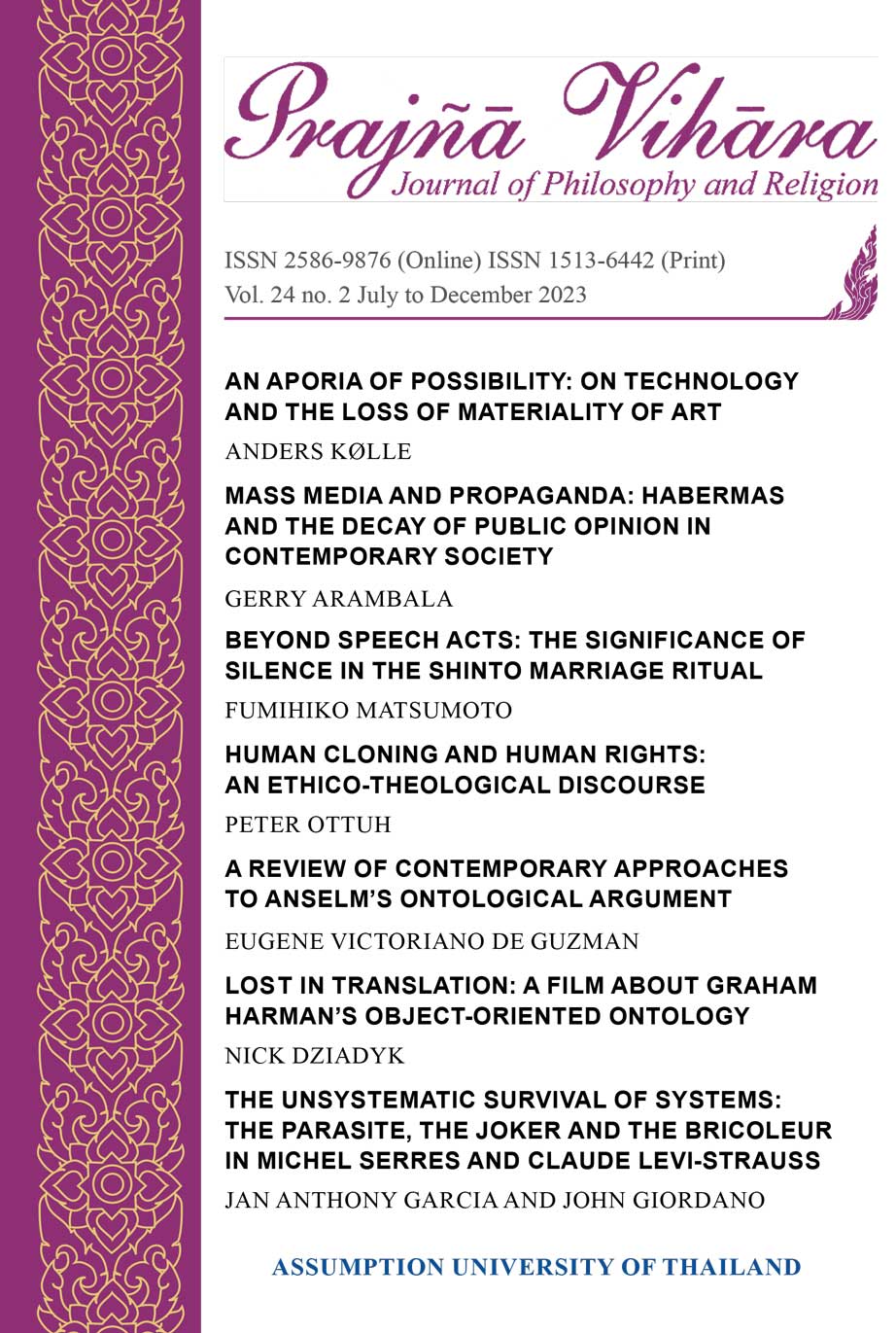BEYOND SPEECH ACTS: THE SIGNIFICANCE OF SILENCE IN THE SHINTO MARRIAGE RITUAL
Keywords:
Shintoism; marriage ritual; silence; Speech Act Theory; Ishin-DenshinAbstract
Rituals and ceremonies in the Western tradition, give priority to the spoken word and various kinds of declarations. But in the Asian tradition, there is also an appreciation for the unspoken. In this article, the researcher will examine the non-verbal communication which takes place in the Shinto marriage ritual. The marriage is accomplished without “words,” “announcements,” or “declarations.” The consummation of the marriage takes place when the couple quietly drinks the sacred liquid, three times in three different cups, for a total of nine times. It is only then the marriage is accomplished. By investigating such a ritual in the Japanese culture or Eastern culture, the paper also suggests limits to Western speech act theory as developed by John Searle.
References
Hendry, Joy. Marriage in Changing in Japan: Community & Society. Routledge. 2010.
Kojiki. Ed. Kurano Kenji, Tokyo, Japan: Iwanami, 1963.
Nihonshoki. Ed. Mitsusada Inoue. Tokyo, Japan: Chuo Bunko, 2020.
Searle, John R. Expression and meaning. Cambridge: Cambridge University Press, 1979.
Downloads
Published
Issue
Section
License
Consent to Publish and Transfer of Copyright
By publishing in Prajñā Vihāra, the author agrees to transfer and assign to Assumption University of Thailand as the Publisher of the Journal, the copyright to the Article in any form, including any and all rights, interests and claims related to it.
The author does retain the following rights:
- The right to make further copies of the published article for their use in classroom teaching.
- The right to reuse all or part of the published article in a compilation of his or her own works or in textbooks of which they are the author or coauthor.
- The right to make copies of the published article for internal distribution within their academic institution.
- All proprietary rights other than copyright, such as patent rights.
- The Article is his or her original work, and has not been published previously and is not under consideration for publication elsewhere.
- It does not contain any matter that is obscene, libelous, or contrary to law.
- They have obtained the necessary license or written authority and paid any and all related fees for the use and reproduction of text, tables, illustrations and other copyrighted work from the owners of the intellectual property rights, and can furnish the Publisher copies of the license/written authority and proof of payment of related fees upon the signing of this Agreement.
- They have the consent of the Co-Authors of the article upon the signing of this Agreement.
- In the event that they intend to republish, reprint or translate all or part of the Article in other publications, they will secure the prior written permission from the journal Editor.
Prajñā Vihāra adopts the Creative Commons Attribution (CC BY-NC-ND) license


